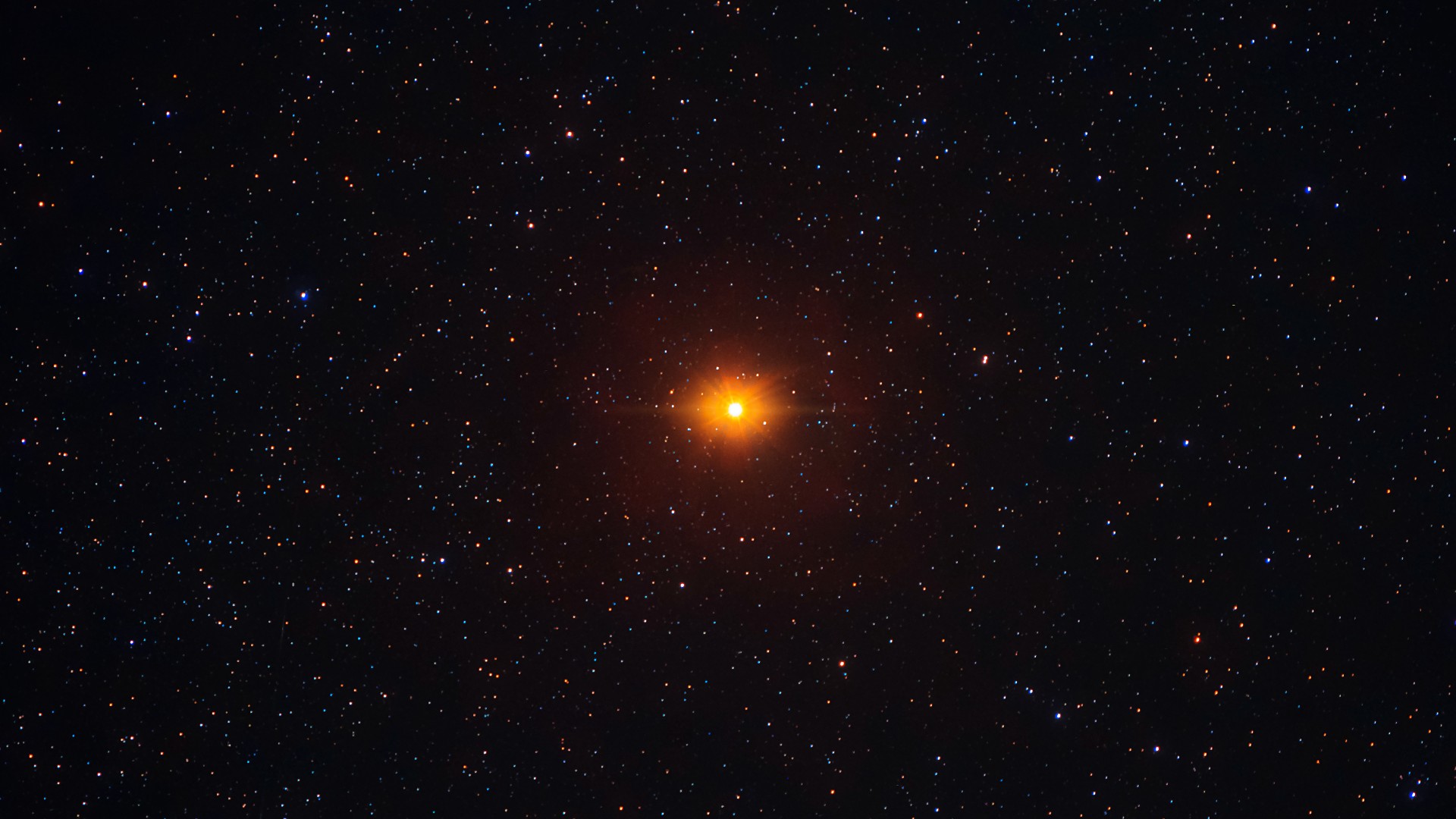Discovery suggests red supergiant Betelgeuse was actually yellow 2,000 years ago
Using historical evidence, scientists have been able to pinpoint when the infamous supergiant got its red coloration.

Using historical depictions and descriptions of Betelgeuse throughout the ages, scientists have been able to pinpoint roughly when the supergiant star got its red coloration.
The team found that the star, located in the Orion constellation in the Milky Way around 640 light-years from Earth, changed from a yellow-orange color to red approximately 2,000 years ago. Betelgeuse is a red giant star, a stage that stellar bodies go through when they finish burning hydrogen in their cores, resulting in the core collapsing and the outer layers of the star puffing out.
When our sun goes through this stage of its evolution in around 5 billion years it will swell out to a radius reaching around the orbit of Mars and consume the inner rocky worlds of the solar system, including Earth.
Related: Betelgeuse is bouncing back from bizarre dimming episode
Astronomers have long been aware that stars shift in color during their lifetimes as nuclear fusion uses up hydrogen in their cores. These color swaps are accompanied by changes in brightness and size and can give vital information about the age of the star and its mass.
Stars more massive than the sun like Betelgeuse, which has 11 times the mass of our sun but is at least 764 times its size, tend to be blue-white or red. But, as they change from hot young blue stars to cooler and older red giants, they pass through a short yellow-orange phase.
By studying historical documents, the researchers found that Betelgeuse went through this phase two millennia ago. The findings could help researchers better understand the life cycles of stars.
Breaking space news, the latest updates on rocket launches, skywatching events and more!
One of the sources used by the team was Chinese court astronomer Sima Qian who wrote about star colors in 100 BCE commenting "white is like Sirius, red like Antares, yellow like Betelgeuse, blue like Bellatrix."
"From these specifications, one can conclude that Betelgeuse at that time was in color between the blue-white Sirius and Bellatrix and the red Antares," University of Jena astrophysicist Ralph Neuhäuser, who is on the team behind the discovery, said in a statement.
Moving forward 100 years in history Hyginus, a Roman scholar, wrote that Betelgeuse was similar in color to Saturn, suggesting that at that time the stars had a yellow-orange hue.
The 14th-century astronomer Ptolemy compared Betelgeuse to other stars, distinguishing it from red-colored bright stars like Antares — a red supergiant around 700 times the size of the sun whose very name in Greek means 'like Mars' — or Aldebaran.
"From a statement by the Danish astronomer Tycho Brahe, one can conclude that, in the 16th century, Betelgeuse was more red than Aldebaran," Neuhäuser added.
In the modern day, astronomers see Betelgeuse as being similar in brightness and color to Antares — found in the constellation of Taurus and located around 604 light-years from Earth.
The process used by Neuhäuser and his team is described as 'terra-astronomy;' mixing astrophysical research with works studied by researchers in fields as diverse as languages, history, and natural philosophy.
"The view back in time delivers strong impulses and important results," Neuhäuser adds. "There are quite a number of astrophysical problems which can hardly be solved without historical observations."
Color shifts aren't the only changes that Betelgeuse has been through recently that have caught the attention of astronomers.
In 2019 and 2020 the star underwent what astronomers labeled the 'great dimming,' dropping in brightness at an unprecedented rate and falling to around 35 percent of its typical brightness. The dimming began in December of 2019, and Betelgeuse recovered its brightness over the following next few months.
This mysterious reduction in the brightness of the red star was met with a flurry of suggested explanations, with some astronomers even suggesting it could be the result of the star contracting before going supernova.
Scientists were finally able to solve the mystery of the great dimming using data collected by the Japanese weather satellite Himawari-8. Infrared and optical observations by the satellite revealed that the dimming had been caused by a combination of the star cooling and a cloud of dust condensing around it.
With this puzzle solved, Betelgeuse is now once again expected to go supernova in around 1.5 million years, something Neuhäuser says this historical investigation has helped confirm.
"The very fact that it changed in color within two millennia from yellow-orange to red tells us, together with theoretical calculations, that it has 14 times the mass of our Sun — and the mass is the main parameter defining the evolution of stars," Neuhäuser concluded. "Betelgeuse is now 14 million years old and in its late evolutionary phases.
"In about 1.5 million years, it will finally explode as [a] supernova."
The team's research is published in the latest edition of the journal Monthly Notices of the Royal Astronomical Society.
Follow us on Twitter @Spacedotcom or on Facebook.

Robert Lea is a science journalist in the U.K. whose articles have been published in Physics World, New Scientist, Astronomy Magazine, All About Space, Newsweek and ZME Science. He also writes about science communication for Elsevier and the European Journal of Physics. Rob holds a bachelor of science degree in physics and astronomy from the U.K.’s Open University. Follow him on Twitter @sciencef1rst.

